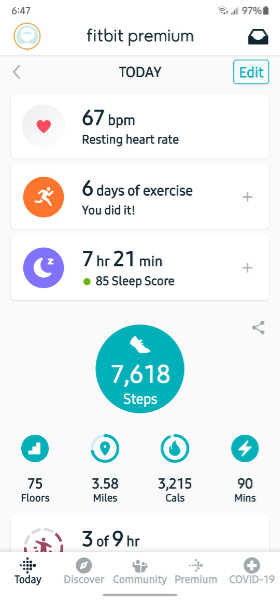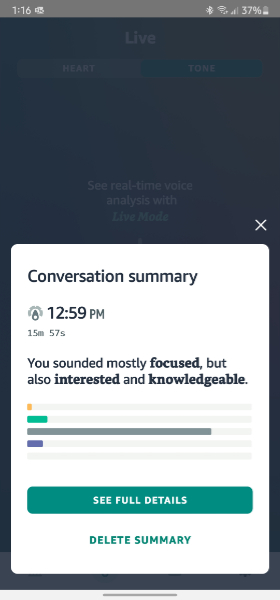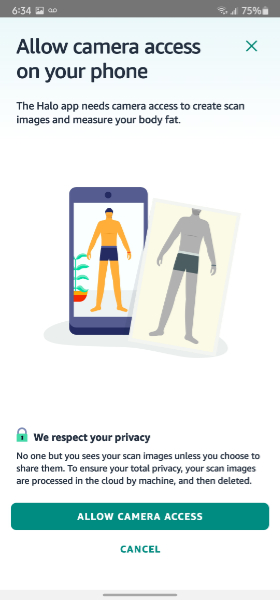Amazon Halo Mini Review
- Paul Thurrott
- Sep 18, 2020
-
11

Even after just a few days, it’s already obvious that the Amazon Halo just isn’t for me. It offers only a small range of health measurements and its key features are quirky and weird. But the biggest dealbreaker for me is the screen. There isn’t one.
And I want a screen.
Windows Intelligence In Your Inbox
Sign up for our new free newsletter to get three time-saving tips each Friday — and get free copies of Paul Thurrott's Windows 11 and Windows 10 Field Guides (normally $9.99) as a special welcome gift!
"*" indicates required fields
To be clear, this is just an assessment for my own needs: I do feel that some people might prefer a display-less fitness and health tracker, and there is no doubt at all that a market exists for low-cost trackers of whatever stripe. One of Amazon’s key strengths—and it’s starting to get them into regulatory trouble—is identifying key customer needs and then delivering low-cost solutions that undercut the current market leaders.
And on that note, Halo is … quirky and different. (But then so was Amazon’s Fire Phone, and we all know how that went.) Instead of the litany of sensors offered by smartwatches and high-end fitness trackers, the Halo just does a couple of things in real-time: It monitors your heart rate, your activity (which is determined by heart rate), and your sleep.
You can also optionally use two intriguing but privacy-invasive features, Tone and Body scan. Tone uses the tracker’s microphone to sense the tone of your voice as you talk throughout the day. And Body scan lets you get a body fat measurement using your handset’s camera. As Amazon notes, this type of measurement is a more accurate way of determining your general healthfulness and expected longevity than the more common body mass index (BMI) measurement, which is based only on height and weight.
So. How does it work?
With regard to the default trackers, they seem to work well enough.
Physical activity is my primary motivation for using a tracker, and where Fitbit does some auto-sensing for activities like walking, running, and so, and lets me manually start and stop weight-lifting and elliptical trainer usage right on its screen, the Halo has no display and only provides automatic activity sensing. What this means is that it can only tell I’m lifting weights or using the elliptical by examining my heart rate at that time.
What that means in practical terms is that Fitbit and Halo have vastly different ideas about my activity. Today, for example, I went for a brisk 30-minute walk with my wife and our dog, as usual, and it was upper-body day at the gym, so I did 20 minutes of cardio on the elliptical and then 35 minutes of machine work. Both devices automatically registered the morning walk. But I told Fitbit to start and then stop measuring the other two activities, which are denoted in its UI as Weights and Treadmill. (Close enough.)

Halo’s view of my day’s activities is less nuanced because it’s all auto-detected: It shows about 45 minutes total of activities, as opposed to the hour and 20 minutes I actually did, and the vast majority of it was considered moderate, which is somewhat amusing (or maybe depressing) to me because I do short sets of very heavy (for me) upper body weights. And I routinely watch my heart rate on the Fitbit to determine when to start the next set. This is one of the reasons I prefer a screen. And why I know that my heart rate is elevated by this workout.

Sleep tracking has been more reliable. Unfortunately, I chose a really bad week for sleep, which is something new and troubling that I can’t explain yet: I’ve been waking up at 4 or 5 in the morning for the past three nights in a row and then staying awake for about an hour, and that’s killed my overall sleep quality. I’ve long used a Fitbit to track sleep, and that device and the Halo both reported the terrible results similarly. In other words, I feel like Halo works fine in this capacity.
But it is, of course, the optional features—Tone and Body scan—that are of the most interest.
Tone is goofy, and it kills the battery life so it’s something I’d likely disable if I were planning to keep using the Halo: Amazon claims that its wearable will work for up to 7 days on a charge normally, but if you enable Tone, it drops to “up to 2 days,” which is terrible.
But I wanted to test it, so I enabled it. The automatic tone recording feature doesn’t seem to have done too much over the past few days—this morning, for example, it reported that I had the highest energy at 1:08 PM, during First Ring Daily, but was also at my most positive and my most negative at that time as well. That’s not very useful.

I also manually recorded my tone during that podcast, which is an interesting feature. When it was over, Halo told me that I was “Mostly focused but had one phrase that sounded happy, amused, or friendly.” It awarded me a smiley face. I don’t know.

Body scan is quite interesting. When you enable this feature, you step through a wizard in which you’re prompted to prop up your handset, stand about six feet away, and then turn in a circle so that it can take a picture of you—preferably with as little clothes on as possible—in four positions (front, left side, back, and then right side).

It then uses the constructed pseudo-3D image it creates to generate a body fat measurement. Naturally, any loose clothing could make you appear bigger, and thus fatter, and so if you’re shooting for accuracy, you’re going to want to leave your modesty at the door. I opted to leave my underwear on, top and bottom, and I’m hoping that the tucked-in t-shirt amplified my love handles, but I doubt it.

Once you have the scan, you’re expected to make additional scans every two weeks for comparison purposes. And the Halo mobile app has some neat tools for understanding what this is all about and even graphically seeing what losing or gaining weight will look like on you, in a rotatable 3D silhouette. I would look amazing with 9 percent body fat! (Who wouldn’t?)
Tone and Body scan raise some obvious privacy implications, and whether you trust Amazon is, of course, a personal decision. But the Halo app is chock full of privacy notices, with links to websites that explain everything Amazon does to protect your privacy. And the app has a nice interface for downloading and deleting any or all of your health data, both from the device and, if you had opted in, from Amazon’s servers.

Speaking of the Halo app, it also includes a ton of great content in a Labs area related to activity, sleep, nutrition, mindfulness, and tone, and this app seems like a great resource for anyone looking to improve their health or wellbeing.
So this is all very useful. The problem—for me—is that what I’m looking for in a tracker is exactly what the Halo doesn’t provide: Specific activity tracking so that it knows what I’m doing and when. And, because I have sleep apnea, VO2 Max and Blood Oxygen tracking. Today, Fitbit delivers on most of that, and the Fitbit Sense is bringing Blood Oxygen tracking. Same for Apple Watch, with the Series 6 adding the Blood Oxygen bit as well.
I feel like a Halo Plus device (or whatever) that had an interactive display would be the more compelling option, and that such a device could act as a more obvious Fitbit competitor. That said, a device with a screen and Tone enabled would likely deliver just some single-digit number of hours of battery life, and I assume that reality played a role in the current device’s design. But if Halo is successful, I could see Amazon expanding the line with more wearables and perhaps other health devices like smart scales. And this is honestly an area where the firm could make a difference, thanks to its huge audience and low-cost ways.
I’ll probably wear the Halo for a few more days just to see if I’ve missed anything, but version 1, alas, is not for me. But it could be exactly what some people need. So I hope this helps anyone who is making that decision.
Tagged with
Conversation 11 comments
-
dell5050
<blockquote><em><a href="#577104">In reply to paul-thurrott:</a></em></blockquote><p>Check out the Withing's HR Pulse. I love mine. I have their smart scale to match and the app is very very nice.</p>